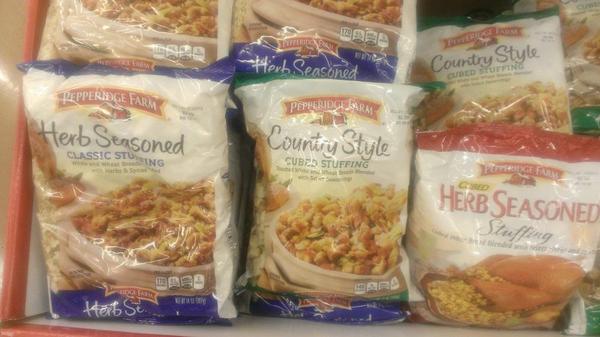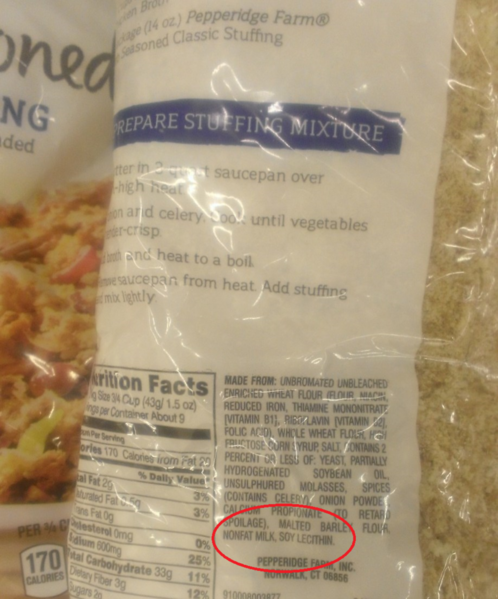Thanksgiving often involves family traditions, whether it be where you celebrate or what foods are on the menu for the holiday meal.
Good food allergy management includes reading every label, every time. This is because ingredients or the way products are manufactured can change at any time. Manufacturers are not required to make any special markings on the package to alert a shopper that the ingredients have changed. So, the only way you will know that the ingredients have changed is to read the entire ingredients statement. Use special care at holidays where you may only be buying and preparing foods that you haven't bought for many months or even since the prior holiday.
The Food Allergen Labeling and Consumer Protection Act (FALCPA) has greatly improved labeling for the 8 major allergens - milk, soy, egg, peanut, tree nut, wheat, fish, and crustacean shellfish. The law requires that all FDA regulated foods must list ingredients which contain one or more of the major food allergens in one of two ways:
1) The common or usual name of the major food allergen must be followed by the food source in parentheses in the list of the ingredients. This will occur the first time the major food allergen is listed and does not have to be repeated each time the name of the specific food allergen appears.
Examples: "lecithin (soy)," "flour (wheat)," and "whey (milk)"
2) There may be a section after or near the ingredient list called “Contains”. After the word “Contains”, there must be listed the name of the food source from which the major food allergen is derived.
Example: "Contains Wheat, Milk, and Soy."
The FDA does not require advisory statements, such as “may contain...” Any advisory statements you find on packaging are completely voluntary.
If you see an advisory statement on a package for the food allergens you manage, it’s safest to avoid those foods. Studies have shown that there is a chance that foods with advisory statements can contain the food allergen and can cause an allergic reaction.
Here is an example of a bag of Pepperidge Farm stuffing that has changed ingredients recently. Some stores may still have products with the old labeling; some will have the ones with the new ingredients that now contain milk and soy (in the form of soy lecithin). We found this at a local grocery store this week. Some of the varieties had the old labeling and old ingredients, some had the new labeling and new ingredients.

Also note that it does not have a "Contains" statement at the bottom of the ingredient statement. The manufacturer is not required to include a "Contains" statement if the ingredients are listed in plain English within the list of ingredients.

Be sure to verify with family and friends if you are relying on them to use brands you trust. Have them save the packaging for you so you can check the ingredients before your child consumes the food.
Happy Thanksgiving from all of us at Kids With Food Allergies. We are truly grateful for you being part of our community!



Comments (0)